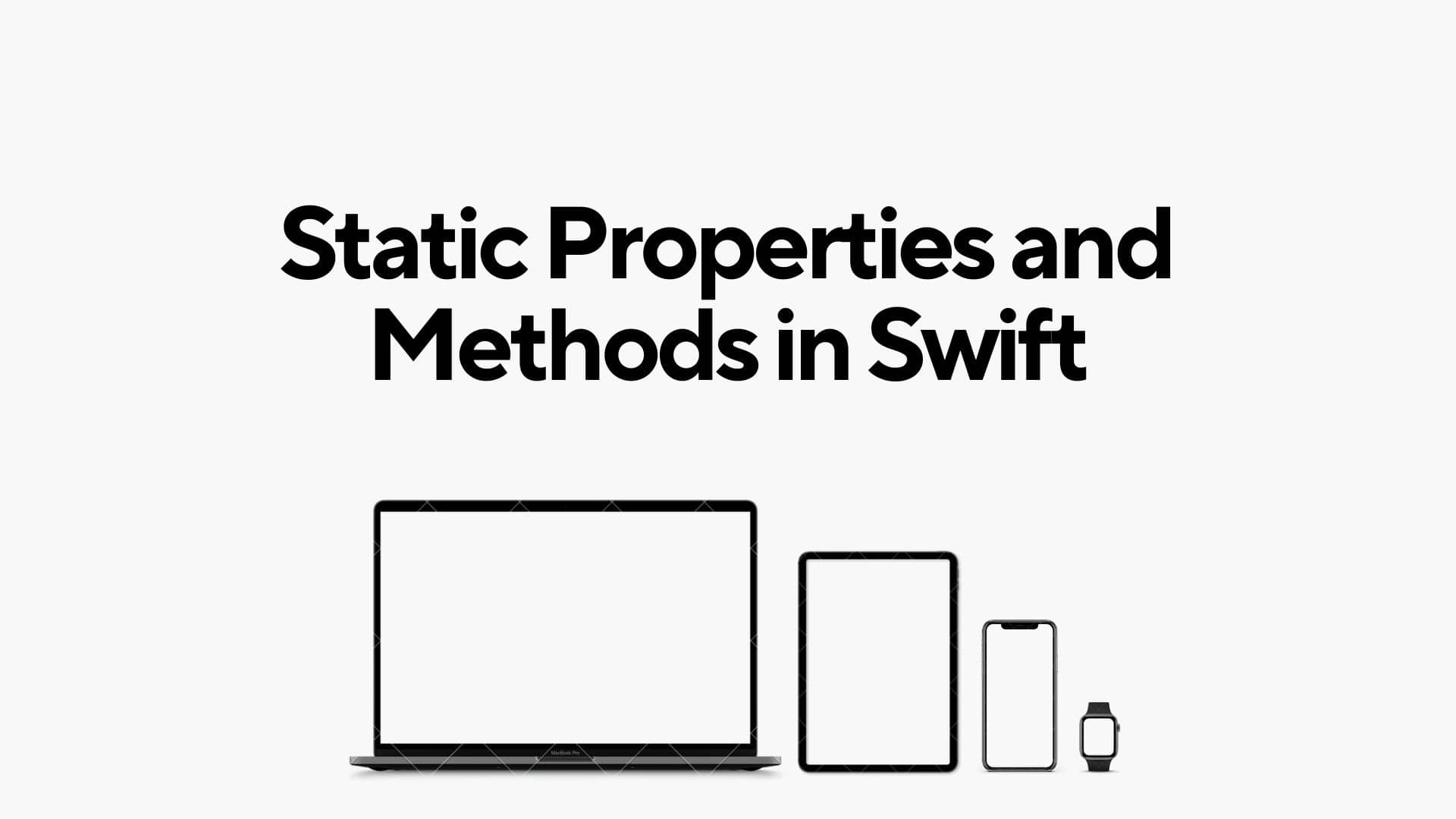Static Properties and Methods in Swift

When building software applications, especially in Swift, a programming language developed by Apple, it's essential to understand concepts like static properties and methods. They provide a powerful way to organize code and manage shared resources across instances of a class or struct. In this article, we'll delve into what static properties and methods are, how they differ from instance properties and methods, and explore real-world scenarios where they prove invaluable.
What are Static Properties and Methods?
Static properties and methods are associated with a type itself rather than with instances of that type. This means they belong to the type definition itself and can be accessed directly on the type, without needing to create an instance.
Static Properties:
Static properties are variables or constants that are shared among all instances of a class or struct. They are declared using the static keyword.
class Math {
static let pi = 3.14159
}In this example, pi is a static property of the Math class. It can be accessed using Math.pi without creating an instance of the Math class.
Static Methods:
Static methods are functions that are associated with a type rather than with instances of that type. They are declared using the static keyword.
struct Utility {
static func double(_ value: Int) -> Int {
return value * 2
}
}Here, double is a static method of the Utility struct. It can be called using Utility.double(5) without creating an instance of the Utility struct.
Differences from Instance Properties and Methods:
- Access: Static properties and methods are accessed directly on the type itself, whereas instance properties and methods are accessed on instances of the type.
- Memory Allocation: Static properties are allocated memory once per type, regardless of the number of instances created. Instance properties, on the other hand, are allocated memory separately for each instance.
- Inheritance: Subclasses cannot override static properties and methods. They are inherited but cannot be overridden.
Real-World Examples:
Example 1: Global Constants
struct Constants {
static let appName = "MyApp"
static let appVersion = "1.0"
}In this example, appName and appVersion serve as global constants for the application. They are accessed throughout the codebase using Constants.appName and Constants.appVersion.
Example 2: Singleton Pattern
class Settings {
static let shared = Settings()
private init() {}
static var themeColor = UIColor.blue
}Here, shared is a static property representing a shared instance of the Settings class, following the singleton pattern. themeColor is a static property representing the application's theme color, accessible and modifiable from anywhere in the codebase.
Example 3: Utility Methods
struct Math {
static func factorial(_ n: Int) -> Int {
guard n > 1 else { return 1 }
return n * factorial(n - 1)
}
}The factorial method calculates the factorial of a given integer. Since it's a mathematical operation and doesn't require maintaining any instance-specific state, it's suitable as a static method.
Takeaway:
Static properties and methods in Swift provide a convenient way to define shared resources and functionality at the type level. They are accessed directly on the type itself and are particularly useful for defining constants, utility functions, or implementing design patterns like the singleton pattern. Understanding when and how to use static properties and methods is crucial for writing clean, efficient, and maintainable Swift code.